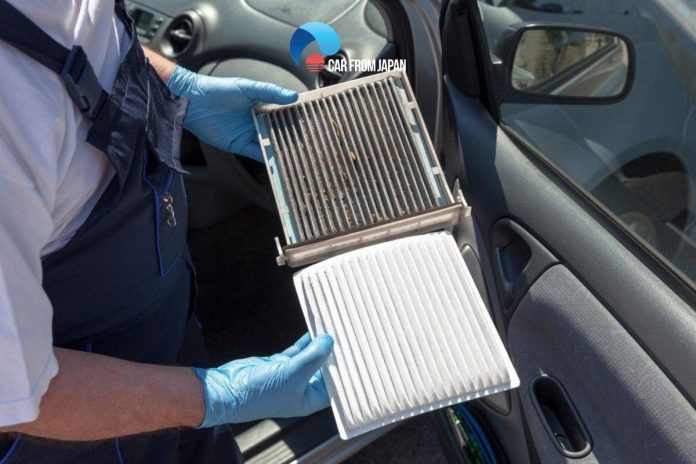Cabin air filter often sits in the background when it comes to the scheduled maintenance of a vehicle. Many drivers don’t even know about its existence.
But any experienced mechanic will tell you about its role in filtering pollutants from the air that enters a vehicle’s cabin.
Many drivers don’t change it year after year because they simply don’t know that they need to.
Contents
- What is a Cabin Air Filter?
- How Often To Change Cabin Air Filter?
- Symptoms of The Damaged Cabin Air Filter
- FAQs on Cabin Air Filter
- Why does my cabin smell musty even after changing the filter recently?
- Is it true that driving with pets shortens the cabin filter’s lifespan?
- Do electric and hybrid cars need cabin filters changed more often?
- Are washable or reusable cabin filters worth it?
- Why is my allergies worsening in the car even with a new cabin filter?
- Can seasonal weather affect how often I should change my cabin filter?
What is a Cabin Air Filter?
The main function of this air filter is to monitor the air entering the cabin and refining it from various substances.
The air that comes through a vehicle’s HVAC system may contain different elements such as fumes, dust, mold spores, and pollen.
This filter removes these harmful elements so you get fresh air inside the car. It can also filter out bigger elements such as debris, leaves, and rodent droppings.
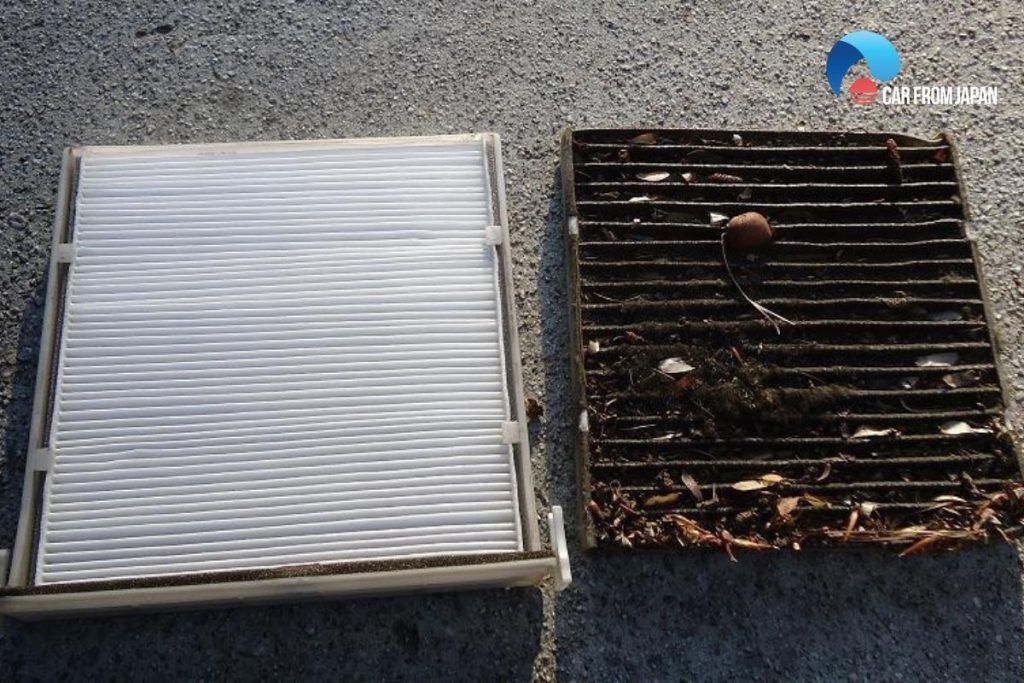
If you suffer from allergy problems and live in an area dotted with lots and lots of trees, a functioning filter can help you breathe easy by preventing pollen and spores from getting inside the car.
It not only improves the air quality but also aids the A/C system to run smoothly.
The filter is located on the dashboard, under the hood, or behind the glove compartment in most vehicles manufactured after 2000. There is basically one filter in each car but some luxury models may have two or more.
How Often To Change Cabin Air Filter?
Many people drive 90,000 miles without changing the filter, which is obviously not healthy for people riding that car.
Check the owner’s manual to be sure about the ideal cabin air filter replacement time. Otherwise, you can change it anywhere between 15,000 and 30,000 miles.
An urban area is likely to have poor air quality because of all the pollution and heavy traffic. Driving in such areas may require changing the filter each year or sooner than that. This applies for driving in any area where the air quality is below par.
How do you know that it’s time to change the cabin air filter? There are a few warning signs such as lasting bad odors, reduced airflow, and noise through the HVAC systems.
Even if you don’t see any of these symptoms, check the cabin air filter at least once in a year.
Negligence leads to dirty air entering the cabin and the HVAC systems working harder than necessary. This may lead to expensive repairs like a burnt motor in the A/C or climate control system.
Changing the cabin air filter is not a difficult task. However, you may need to remove the glove box in some car models. The filter is mounted with several clips and pins and careless handling may lead to breaking these delicate parts.
Take the car to an auto repair shop if you don’t understand what to do. This job will cost only between $70 and $110, based on the filter’s price and labor costs.
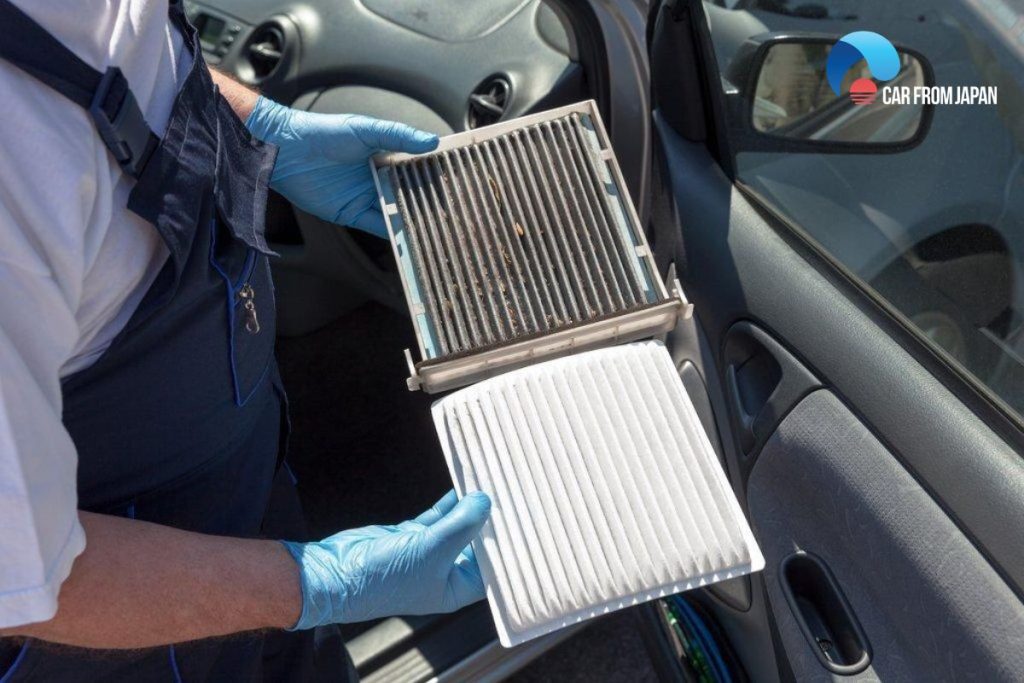
See More: What’s the Correct Amount of PAG Oil for an AC System?
Symptoms of The Damaged Cabin Air Filter
Here are some symptoms you should take notice on when it comes to cabin air filter!
Reduced airflow from HVAC vents
One of the most direct and noticeable symptoms of a clogged cabin air filter is a decrease in the amount of air coming from your vents.
You might turn your fan to its highest setting, but the airflow feels weak, as if it were on a low setting.
This lack of force affects both the heating and air conditioning systems, making it difficult to control the temperature inside your vehicle.
This reduction happens because the filter is so saturated with dust, pollen, leaves, and other debris that it creates a physical barrier.
The blower motor, which is the fan that pushes air into the cabin, has to work much harder to force air through the blockage.
Unpleasant odors
If you notice a persistent musty, or dirty sock-like smell coming from your vents, especially when you first turn on the A/C or fan, a dirty cabin air filter is the most likely culprit.
The filter traps organic materials like pollen, leaves, and insects, which can decompose over time. When combined with moisture that naturally condenses in the HVAC system, the filter becomes a breeding ground for mold and bacteria.
This odor is more than just unpleasant; it’s an indication that you are breathing in mold spores and bacteria every time you use your car’s climate control.
Using an air freshener will only mask the problem, while replacing the filter removes the source of the smell and restores clean air to the cabin.
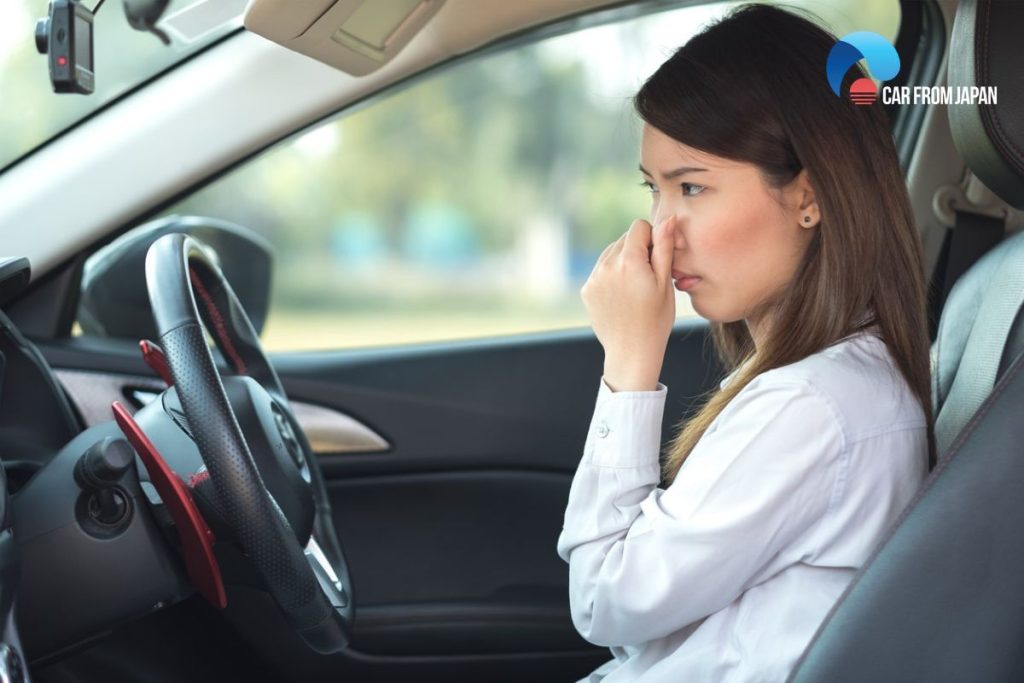
Increased fan motor noise
When a cabin air filter becomes severely clogged, you may hear unusual noises coming from the dashboard area when the fan is on.
The sound can be a whistling, whirring, or straining noise that gets louder as you increase the fan speed. This is the sound of the blower motor struggling to pull air through the heavily restricted filter.
Addressing the noise by replacing the inexpensive cabin air filter is a proactive measure that can save you from a significantly more complex and costly repair down the line.
Windows fogging up easily
If you find that your windshield and windows are fogging up frequently and take an unusually long time to clear, it can be a symptom of a clogged cabin air filter. The reduced airflow prevents the system from effectively removing moisture from the glass.
This is not only an inconvenience but a safety issue. In damp, humid, or cold conditions, the inability to quickly defog your windows can make driving dangerous.
Changing the filter is essential here for maintaining clear visibility and ensuring safe operation.
Worsening allergies or respiratory issues
If you or your passengers start experiencing worsening allergy symptoms, such as sneezing, coughing, watery eyes, or a runny nose, only when inside the car, the filter is no longer doing its job effectively.
In worse cases, a dirty filter can release spores and bacteria into the air you breathe.
For individuals with asthma or other respiratory sensitivities, this can turn the vehicle’s interior into a trigger for health issues. So be aware!
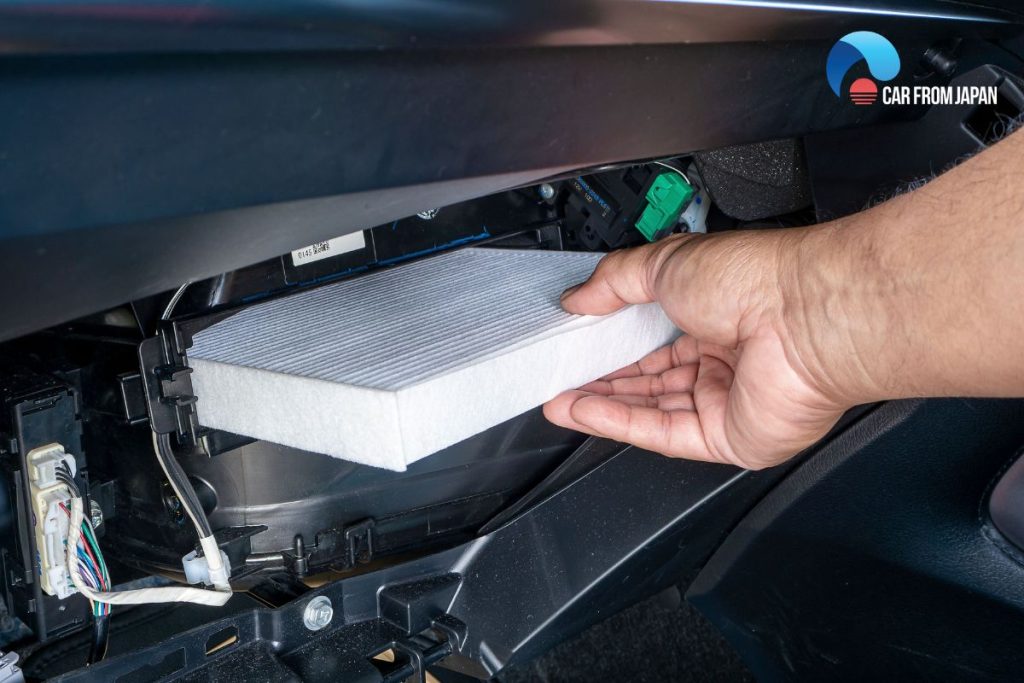
Related Post: Engine Air Filter vs Cabin Air Filter: Understand Their Roles
FAQs on Cabin Air Filter
Why does my cabin smell musty even after changing the filter recently?
It could be mold inside the HVAC evaporator, not just the filter. If you change the filter but don’t disinfect the system, the smell may persist.
Is it true that driving with pets shortens the cabin filter’s lifespan?
Yes. Pet dander and hair can clog filters quickly, especially if your HVAC system constantly recirculates air while transporting animals.
Do electric and hybrid cars need cabin filters changed more often?
Surprisingly, sometimes yes.
Because these vehicles often run quieter, drivers may use climate systems more, increasing air circulation through the filter.
Are washable or reusable cabin filters worth it?
They can be. But only if properly maintained. Neglecting to clean them regularly can make them perform worse than disposable filters.
Why is my allergies worsening in the car even with a new cabin filter?
Not all filters are equal. If you suffer from allergies, upgrade to a HEPA-grade filter, which traps much finer particles like pollen and dust mites.
Can seasonal weather affect how often I should change my cabin filter?
Yes. In areas with heavy spring pollen or dusty dry seasons, filters clog faster.
You may need to change it more than once a year based on climate.
Now you know how often you need to change a cabin air filter and some symptoms to notice when this part turns bad over time.
For more insightful Car maintenance tips, follow Car From Japan today!

